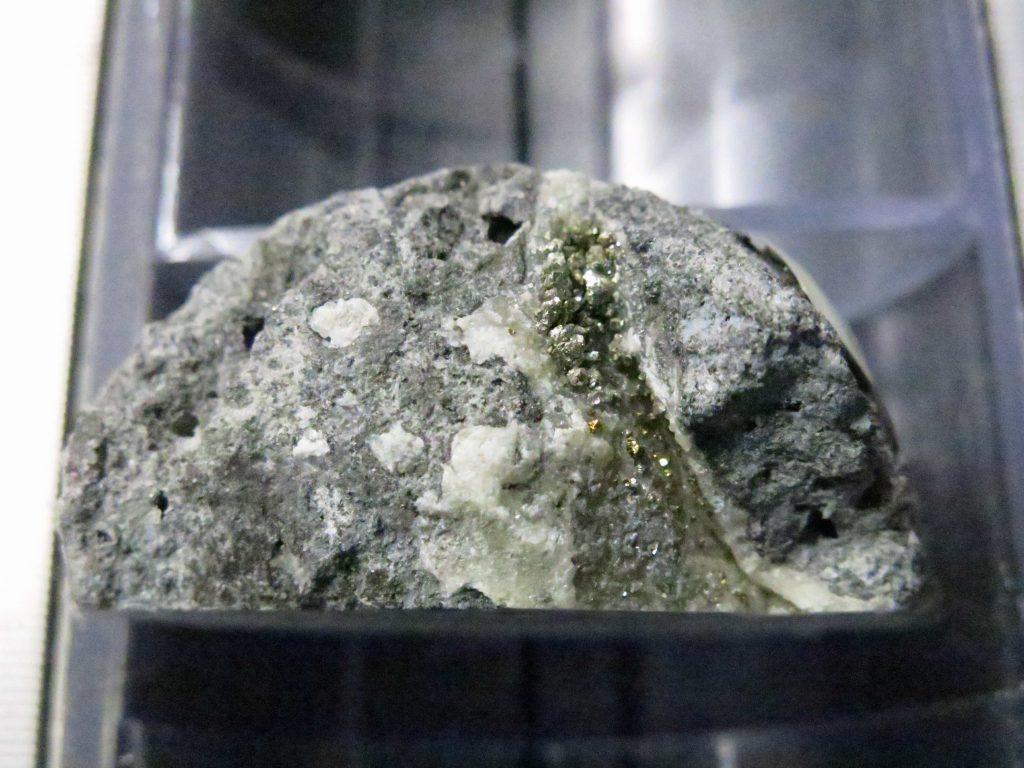
The Origin of Life, And Other Stories
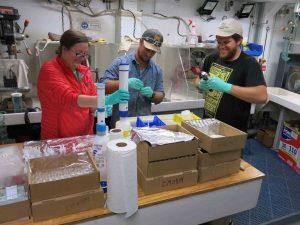
It is another day and life on the JR goes on. More rock samples are chiseled to bits in the anaerobic glove box; new sediment cores collected close to the mound of Ringvent are processed and sampled; and piled-up samples are furiously analyzed. The deadline for drilling will come on Sunday, no matter what. Here, methane wizard Jeanine, technician Micheal Bollen, and Phys Props DJ Florian Neumann prepare new vials for gas sampling — they will be needed soon. Note, this only looks like a bar, but it is not. These guys are putting saltwater into small sampling bottles, not preparing Tequila shots.
By mid-morning, an unusual object is noticed on the core table where some of yesterdays cores [sills from hole 1547E] are laid out for inspection and sampling. Is it a mineral?
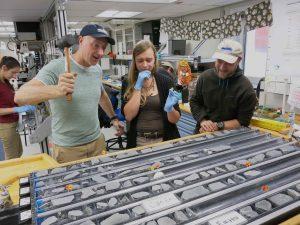
Ivano thinks that there is no better examination tool than a hammer to crack tough minerals. Louise would like to place a paleomagnetism sampling flag and weeps for the beautiful sample that will be blown to bits…
However, we remember in time that abiotic condensation reactions on hydrothermal rock surfaces have most likely generated the macromolecules that constitute the essential building blocks of life… therefore this mineral concretion, although obviously calcite-encrusted, may be biogenic after all. An astonishing surprise! Everyone would like a sample and is planting sampling flags.
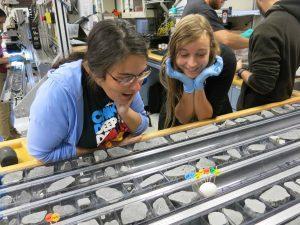
Louise and Myriam are strongly attracted to this specimen; it answers the “chicken and egg” question firmly in favor of the latter.
Two floors down in the galley, a birthday is being celebrated; it is Rodrigo’s turn. Not a trace of midlife crisis, round-number syndrome etc; Rodrigo merely wishes to be reunited with his dog, Conan, as he is blowing out the candle. Conan’s picture is up on the stairwell, the very picture of canine endearment.
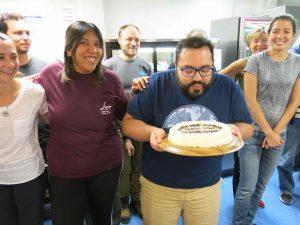
Here is Conan is all his rugged handsomeness. He is well cared for, but waiting for his master… it is really time for this cruise to end.
The last blog entry today is from the temperature probe lab.
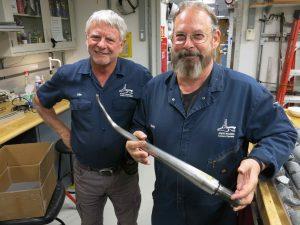
Here, marine instrument gurus Mike Meiring and Randy Gjesvold have recovered one of their SET-2 temperature probes after its last deployment. The probe is designed for tough sediments, but has actually split the basalt of the Ringvent sill and recorded the in-situ temperature. Now we have the in-situ temperature for the basalt itself, and it is perfectly compatible with thermophilic microbes. The probe is commended for its heroic service and may go into the IODP museum — this cruise is producing display items at an alarming rate.
No sunset picture, sorry. The rain clouds have pulled up over the mountains of Baja and there is not much to see. Tomorrow perhaps…
This blog post first appeared on Nov. 7 on my daily blog of EXP385. Make sure to go to expedition385.wordpress.com to read the latest updates of this expedition!